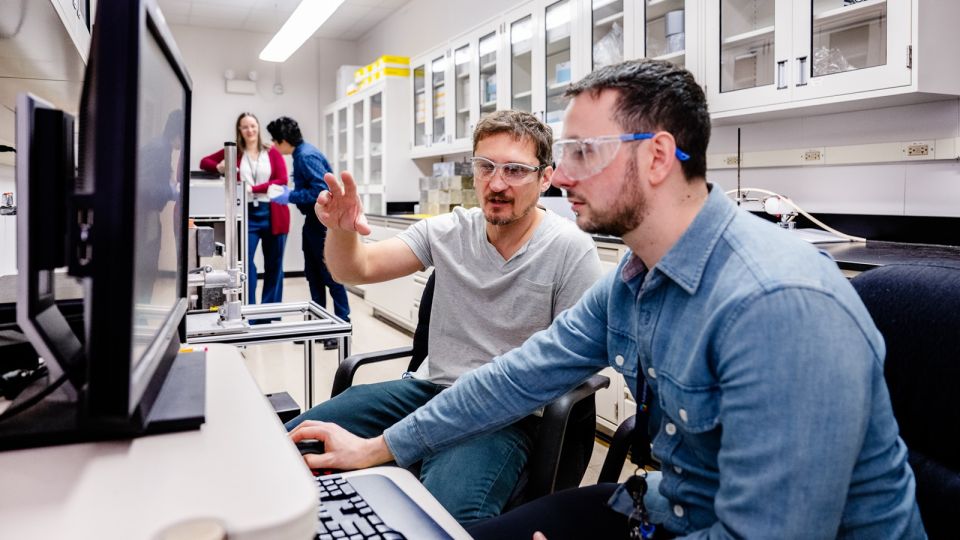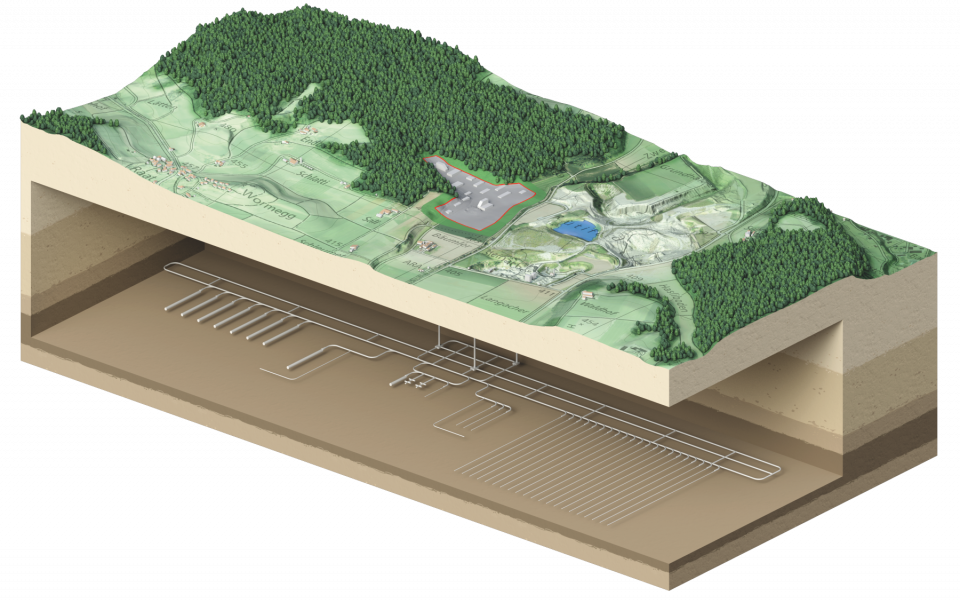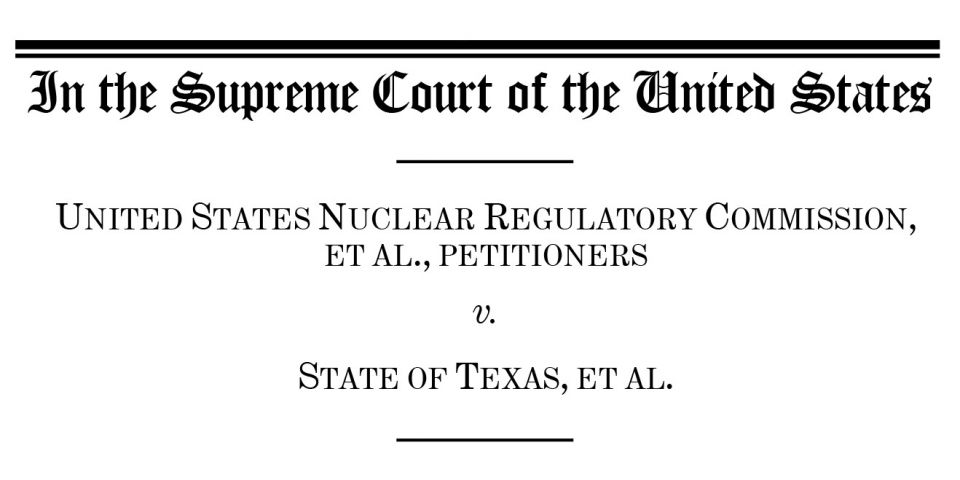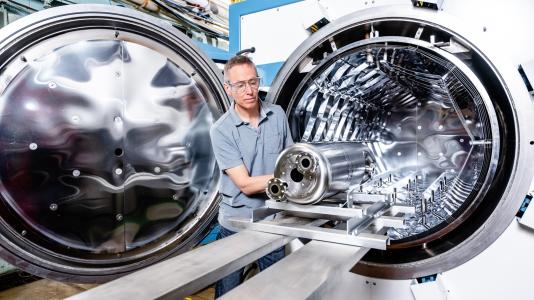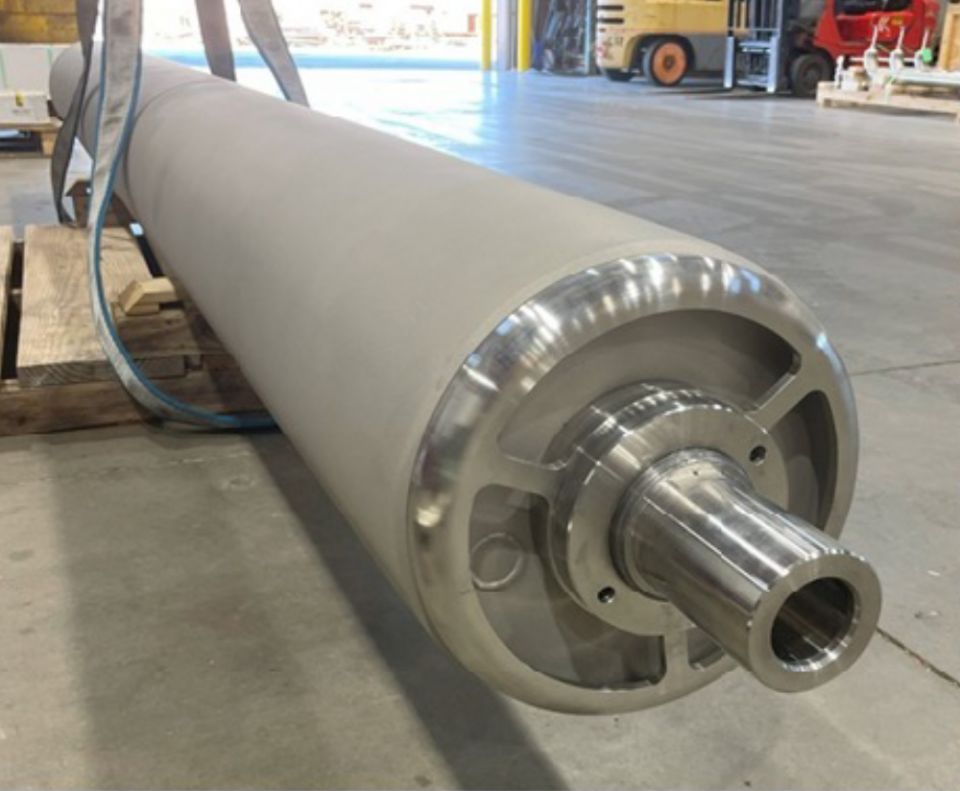ANS's Mark Peters testifies to Congress on recycling used nuclear fuel
On Wednesday, June 6, Dr. Mark T. Peters appeared on behalf of the American Nuclear Society before the U.S. House Foreign Affairs Subcommittee on Asia and the Pacific. Peters is the Deputy Laboratory Director for Programs at Argonne National Laboratory and testified at the invitation of the subcommittee.
The hearing is titled "What's Next for the U.S. - Korea Alliance." Additional information, including all prepared testimony, is available via the Committee website. Peters' prepared testimony is below and can be downloaded in PDF format by clicking HERE.
Recycling Used Nuclear Fuel: Balancing Energy and Waste Management Policies
Testimony to U.S. House of Representatives
Committee on Foreign Affairs
Subcommittee on Asia and the Pacific
Mark T. Peters, American Nuclear Society
June 6, 2012
My name is Mark Peters, and I am the Deputy Laboratory Director for Programs at Argonne National Laboratory. However, today I am speaking on behalf of the American Nuclear Society; my remarks should not be considered as an official statement from Argonne or the Department of Energy.

- Peters
For decades, the United States has grappled with the multiple challenges of crafting a long-term solution for the management of used nuclear fuel. These persistent challenges have taken on new urgency in the wake of the accident at Japan's Fukushima Daiichi nuclear power plant, which has focused international attention on used nuclear fuel storage. Although the challenges of waste management require close scrutiny, these issues are most effectively considered within the context of an integrated policy for nuclear energy and nuclear waste management. Unfortunately, the United States is unique in its lack of such an integrated policy. Most other nations that rely on nuclear energy, including France, Russia, China, Japan, and Republic of Korea, have policies in place that promote development of used fuel recycling and advanced fast reactors, in order to ensure the long-term sustainability of their nuclear investments. We must consider our nuclear energy technology collaborations and partnerships within this global context.
At present, the United States' strategic investments in advanced nuclear energy technologies are lagging; as a result, we rely increasingly on collaborative arrangements with foreign research institutions to conduct research in these areas. These collaborations provide advantages to both parties, and the United States has benefited from them. However, close alignment between government and nuclear industries in these nations speeds the international deployment of these cooperatively developed technologies, such as used fuel recycling and fast reactor technologies, while the United States has moved much more slowly in its adoption of them.
The Republic of Korea has publicly expressed its interest in incorporating electro-metallurgical reprocessing technology, commonly known as "pyroprocessing," into its long-term nuclear fuel cycle plans. Pyroprocessing offers several potential benefits over current aqueous recycling techniques, such as the PUREX process being used in France and Japan today. These include the ability to recover minor actinides, which otherwise contribute significantly to the long-term radiotoxicity of used nuclear fuel; fewer releases of fission gases and tritium; and, the lack of production of pure plutonium, which helps to address proliferation concerns. Clearly, there will be engineering challenges inherent in the development of pyroprocessing technology, as there are with any other advanced manufacturing processes. However, these challenges can be addressed through joint research and development activities, and solving these challenges will have important implications for the United States as well as the Republic of Korea.
The American Nuclear Society believes that nuclear fuel recycling has the potential to reclaim much of the residual energy in used fuel currently in storage as well as used fuel that will be produced in the future, and that recycling offers a proven alternative to direct disposal of used fuel in a geological repository. In other nations, recycling of nuclear fuel with proper safeguards and material controls, under the auspices of the International Atomic Energy Agency (IAEA), has demonstrated that high-level waste volumes can be reduced safely and securely while improving the sustainability of energy resources.
It is the opinion of the ANS that the United States should begin planning a thoughtful and orderly transition to nuclear fuel recycling in parallel with the development of a geologic repository. Recycling would enhance the repository's efficiency, eliminating the need for most complex and expensive engineered barriers and reducing the timeframe of concern from more than 100,000 years to a few hundred years.
The ANS also believes that the United States should accelerate development of fast spectrum reactors, which are uniquely capable of generating energy while consuming long-lived waste. Six decades ago, on December 20, 1951, scientists and engineers from Argonne National Laboratory started a small electrical power generator attached to an experimental fast reactor, creating enough energy to power four 200-watt electrical bulbs. That historic achievement demonstrated the peaceful use of nuclear energy and launched today's global commercial nuclear energy industry. But it should not be overlooked that the first electricity generated through nuclear energy was produced using a fast reactor.
In closing, let me reiterate that the ANS believes that nuclear energy has a significant role to play in meeting the global energy demands of the 21st century, and that a global expansion of nuclear energy can be achieved safely and securely. I look forward to your questions. Thank you.
BACKGROUND
Current Recycling Technologies
PUREX: Current commercial used nuclear fuel reprocessing technologies are based on the PUREX process, a solvent extraction process that separates uranium and plutonium and directs the remaining minor actinides (neptunium, americium, and curium) along with all of the fission products to vitrified waste. The PUREX process has more than 50 years of operational experience. For example, the La Hague reprocessing facility in France treats used fuel from domestic and foreign power reactors. The plutonium recovered is recycled as a mixed-oxide fuel to generate additional electricity. This technology also is used for commercial applications in the United Kingdom and Japan.
There are a number of drawbacks to the PUREX process. PUREX does not recover the minor actinides (neptunium, americium, curium, and heavier actinide elements), which compose a significant fraction of the long-term radiotoxicity of used fuel. Advanced fast reactors can transmute and consume minor actinides if they are separated from other fission product elements, but incorporation of minor actinide separations into existing PUREX facilities adds complexity and is outside commercial operating experience. Moreover, existing international facilities do not capture fission gases and tritium; these are discharged to the environment within regulatory limits. Although plutonium is recycled as mixed oxide fuel, this practice actually increases the net discharge of minor actinides. Finally, the production of pure plutonium through PUREX raises concerns about materials security and proliferation of nuclear weapons-usable materials.
Pyroprocessing: Pyroprocessing is currently being used at the Idaho National Laboratory to treat and stabilize used fuel from the decommissioned EBR-II reactor. The key separation step, electrorefining, recovers uranium (the bulk of the used fuel) in a single compact process operation. Ceramic and metallic waste forms, for active metal and noble metal fission products respectively, are being produced and qualified for disposal in a geologic repository. However, the demonstration equipment used for this treatment campaign has limited scalability. Argonne National Laboratory has developed conceptual designs of scalable, high-throughput equipment as well as an integrated facility for commercial used fuel treatment, but to date only a prototype advanced scalable electrorefiner has been fabricated and successfully tested. Additionally, work is underway at Argonne to refine the fundamental understanding of pyrochemical processes to achieve greater control of the composition of the recovered materials, which will facilitate developing safeguards consistent with U.S. non-proliferation goals.
Fuel Cycle Research in the United States
In the United States, the primary organization with responsibility for the research and development of used fuel recycling technologies is the Department of Energy's Office of Nuclear Energy (DOE-NE), through its Fuel Cycle Research and Development program. This program supports research to develop and evaluate separations and treatment processes for used nuclear fuel that will enable the transition from the current open fuel cycle practiced in the United States to a sustainable, environmentally acceptable, and economic closed fuel cycle. Ongoing projects related to reprocessing and waste management include:
• Using advanced modeling and simulation coupled with experiments to optimize the design and operation of separations equipment.
• Exploring an innovative one-step extraction process for americium and curium, radionuclides that are major contributors to nuclear waste toxicity, to reduce the cost of aqueous-based used-fuel treatment.
• Further developing pyrochemical processes for used fuel treatment. These processes enable the use of compact equipment and facilities, treatment of used fuel shortly after discharge from a reactor, and reduction of secondary waste generation.
• Developing highly durable and leach-resistant waste forms of metal, glass, and ceramic composition for safe, long-term disposal.
However, it must be noted that the United States increasingly relies on collaborative arrangements with foreign research institutions and universities to conduct research in these areas. For example, Argonne, Idaho, and other U.S. national laboratories are working with the Korea Atomic Energy Research Institute, in a series of joint studies sponsored by the United States and Republic of Korea, to study disposition options for used nuclear fuel, including pyroprocessing, in order to develop economic, sustainable long-term solutions, consistent with non-proliferation objectives, for nuclear energy production and waste management. The state of U.S nuclear research facilities is declining compared to steady investments being made in countries such as France, Russia, Japan, and Republic of Korea. More importantly, those governments, as part of their national energy policies, have committed to the development and deployment of advanced fast reactor technologies, which are an important element of an integrated energy and waste management policy.
Advanced Fast Reactor Technology
The American Nuclear Society believes that the development and deployment of advanced nuclear reactors based on fast-neutron fission technology is important to the sustainability, reliability, and security of the world's long-term energy supply. Nearly all current nuclear reactors are of the "thermal neutron" design, and their capability to extract the energy potential in the uranium fuel is limited to less than 1% of that available. The remainder of the energy potential is left unused in the discharged fuel and in the uranium, depleted in U-235, that remains from the process of enriching the natural uranium in the isotope U-235 for use in thermal reactors. With known fast reactor technology, this unutilized energy can be harvested, thereby extending by a hundred-fold the amount of energy extracted from the same amount of mined uranium.
It is the opinion of the ANS that fast reactors in conjunction with nuclear fuel recycling can diminish the cost and duration of storing and disposing of waste. These cost savings may offset cost increases in the fuel cycle due to reprocessing and fuel re-fabrication. Virtually all long-lived heavy elements are eliminated during fast reactor operation, leaving a small amount of fission product waste that requires assured isolation from the environment for only hundreds of years. The design and construction of a geologic repository would be substantially less complex and costly. Just as importantly, a repository of this type could be located in a very broad range of areas, increasing the likelihood of multiple host locations.
Summary
The American Nuclear Society endorses development of used nuclear fuel recycling in fast neutron spectrum reactors in parallel with a geologic repository to secure an integrated, sustainable nuclear energy system for the United States. This initiative should balance the needs of the nuclear energy production sector with those of the waste management sector to achieve an integrated system that increases resource utilization for energy production, disposes waste in an environmentally acceptable manner, and is economic. The global nature of nuclear energy production and waste management encourages the continuation of U.S.-foreign collaborations to develop and demonstrate recycling and fast reactor technologies. In this regard, the relationship between the United States and Republic of Korea is of mutual benefit and of strategic importance to our nuclear energy and waste management policies.
_______________________




